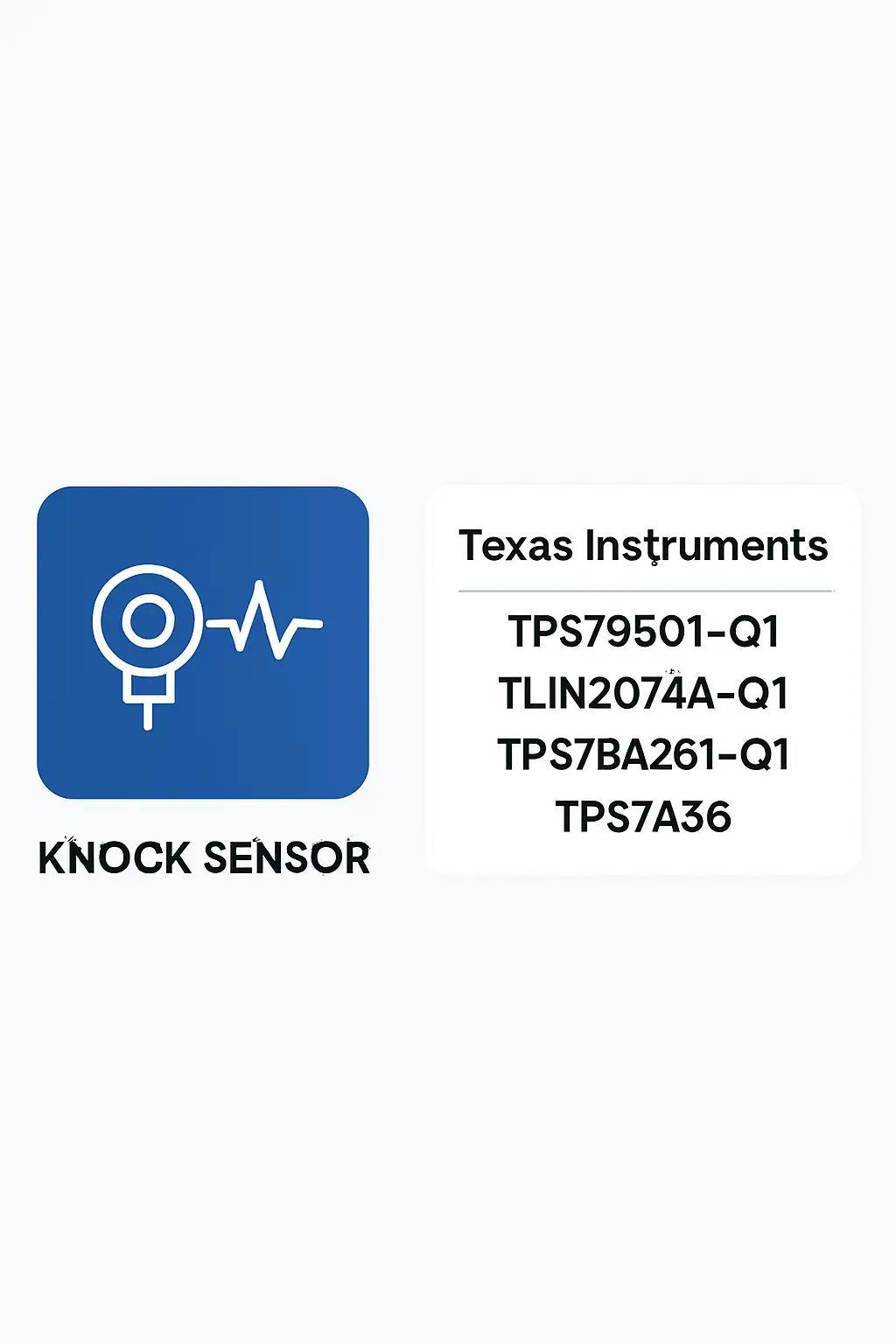Knock Sensor
The Knock Sensor is a critical component in Powertrain & ICE Management systems, specifically designed for Powertrain Sensors in automotive electronics. It detects abnormal vibrations or knocking sounds within the engine, which can occur due to improper combustion or incorrect fuel timing. By monitoring these vibrations, the knock sensor provides real-time feedback to the engine control unit (ECU), enabling it to adjust ignition timing and prevent engine damage.
This sensor plays a vital role in enhancing engine performance, improving fuel efficiency, and reducing emissions. It ensures optimal engine operation under various driving conditions, contributing to both vehicle reliability and driver safety. The knock sensor is widely used in modern internal combustion engines (ICE) across passenger cars, commercial vehicles, and high-performance automobiles.
In the context of Automotive Electronics, the knock sensor exemplifies the integration of advanced sensor technology with engine management systems. Its accurate detection capabilities help maintain smooth engine operation, reduce wear and tear, and support compliance with stringent emission standards. As automotive technology continues to evolve, the knock sensor remains an essential element in the development of smarter, more efficient powertrain systems.
Details
Knock Sensor

Related Parts
| Series Name | Description | Manufacturer Name | Attribute Description |
|---|---|---|---|
| Texas Instruments | 300mA, low-dropout linear regulator with ultra-low noise, high PSRR, and enable pin; operates from 2.7V to 5.5V input, fixed output options, only 1μA quiescent current in shutdown. | ||
| Texas Instruments | 2.7V to 5.5V supply, 1Mbps data rate, ±40kV HBM ESD protection, integrated isolated DC/DC, 16-pin SOIC package, AEC-Q100 qualified for automotive applications. | ||
| Texas Instruments | 36V, 100mA low-dropout regulator with enable, low IQ, and thermal shutdown; operates from -40°C to 125°C; ultra-low quiescent current; integrated protection features. | ||
| Texas Instruments | 3.3V fixed output, 1.5A low-dropout regulator, 4.5V to 20V input, ultra-low noise, high PSRR, enable pin, thermal shutdown, 6-pin WSON package. | ||
| Texas Instruments | 3.3V to 5.5V input, 8A output, 2.2MHz switching frequency, synchronous step-down converter, integrated FETs, efficiency up to 95%, over-current and over-temperature protection, small 3mm × 3mm QFN package. | ||
| Texas Instruments | Input voltage: 0.7V to 3.3V; Output voltage: up to 5.5V; Max output current: 1.2A; Efficiency: up to 95%; Operating frequency: 2.5MHz; Low quiescent current: 400nA. |








.png?x-oss-process=image/format,webp/resize,h_32)










